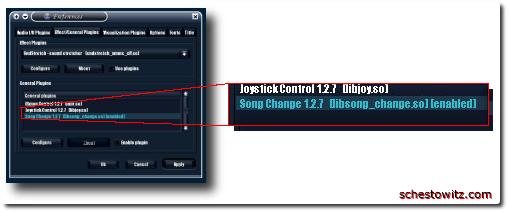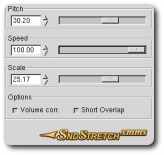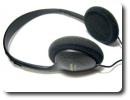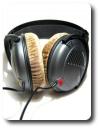Ever wondered how much you listened to a particular song?
XMMS possesses a great extent of flexibility. It provides facilities which, when customised appropriately, can dump complete song descriptions. XMMS can then progressively, accumulatively add song data to log files. Timestamps imply the duration of listening, which lead to possible future extensions, e.g.:
- Automatically parse (scan, hash, then analyse) the log file/s
- Compute an average listening time — that is before skipping to another track — for each individual song
- Erase music that is frequently skipped or just output a ‘prospective deletion list’ to another file
Input/output operations are made quite simple. These can be invoked as command-line strings whenever a new track begins. It is a built-in XMMS plug-in, which can be found under Preferences » Song Change » Configure (see illustration below)

Add the following line to the “Song change” Command field:
(date; echo %s) >> ~/My_playlists/playlist.log
 I am providing an example log file, assembled naturally (not artificially. Honest!) over 20 minutes or so. I still need to get rid of the doubly appearances, apparently caused by
I am providing an example log file, assembled naturally (not artificially. Honest!) over 20 minutes or so. I still need to get rid of the doubly appearances, apparently caused by xmms-kde in my dock (screenshot on the right). As well as giving a minimal user interface, xmms-kde enables control of the player with CTRL+SHIFT+keypad even if the player is neither visible nor in focus.
A music log file results in even more redundant data to store. According to a rough calculations, I will see it growing by 1 megabyte every month or so. Compression, however, should make it only 10-20% of its original size.
UPDATE 26/06/2005: The following command, which can be set to become a nightly cron job, will slice the large log file so that it is composed of daily ‘chunks’:
mv ~/[Path]/playlist.log ~/[Path]/playlist-`date +%Y-%m-%d`.log
This can be extended to form an annual and monthly hierarchy of directories.
See the later extension: producing history spreadsheets
 There is a true advantage to having audio stored locally, as in the case of off-line podcasting. There is full control, in general, over the audio data in question. This means that podcasts can be sped up to fit the preferences of the listener. There is an XMMS plug-in called SndStretch (shown to the left) which I absolutely adore. It can speed up audio to be up to twice as fast, without change in pitch. No more squeaky voice due to change in pace. An half-hour show can be listened to it in only 15 minutes. This also works for music, which makes it more entertaining and variable.
There is a true advantage to having audio stored locally, as in the case of off-line podcasting. There is full control, in general, over the audio data in question. This means that podcasts can be sped up to fit the preferences of the listener. There is an XMMS plug-in called SndStretch (shown to the left) which I absolutely adore. It can speed up audio to be up to twice as fast, without change in pitch. No more squeaky voice due to change in pace. An half-hour show can be listened to it in only 15 minutes. This also works for music, which makes it more entertaining and variable.





 Filed under:
Filed under: 
 I am providing
I am providing  Some months ago, an automatic and effective way of obtaining music
Some months ago, an automatic and effective way of obtaining music  eer-to-peer (P2P) and the World Wide Web (which we most commonly perceive as hypertext — HTTP) are separate. When one uses an Internet connection to directly communicate with a remote machine, then traffic is uncensored, often not monitored, and there are no restrictions imposed on the exchanged material. This justifies the potential illegality of P2P networking.
eer-to-peer (P2P) and the World Wide Web (which we most commonly perceive as hypertext — HTTP) are separate. When one uses an Internet connection to directly communicate with a remote machine, then traffic is uncensored, often not monitored, and there are no restrictions imposed on the exchanged material. This justifies the potential illegality of P2P networking. Let us consider 3 types (‘families’ or ‘classes’ if you like) of headphones:
Let us consider 3 types (‘families’ or ‘classes’ if you like) of headphones: In-ear: Often cheaply made. My last set lasted only 4 days, but it had a nice mechanism for isolating noise. Many headphones these days penetrate the ears, yet research has shown that this is damaging to the ear. When I searched for a headphones replacement 5 days ago I saw an odd in-ear set which would penetrate nearly 1 inch inside the ears. My knees could bend seeing the scary otoscope-like design.
In-ear: Often cheaply made. My last set lasted only 4 days, but it had a nice mechanism for isolating noise. Many headphones these days penetrate the ears, yet research has shown that this is damaging to the ear. When I searched for a headphones replacement 5 days ago I saw an odd in-ear set which would penetrate nearly 1 inch inside the ears. My knees could bend seeing the scary otoscope-like design. Large headphones: my favourite type, but only suitable indoors for obvious reasons.
Large headphones: my favourite type, but only suitable indoors for obvious reasons.


